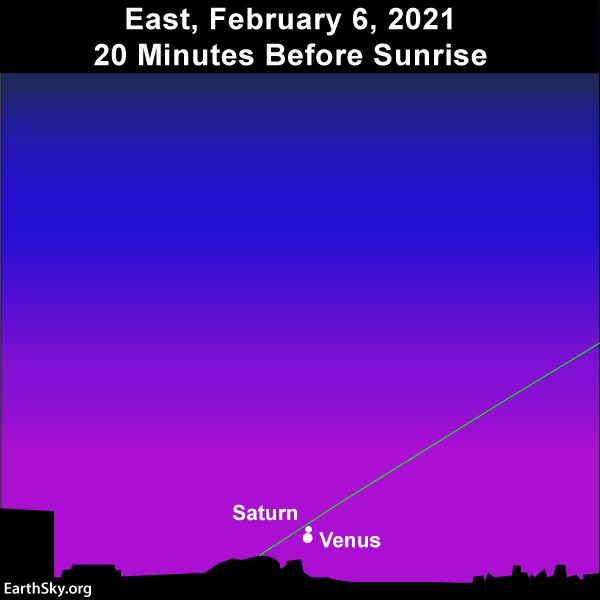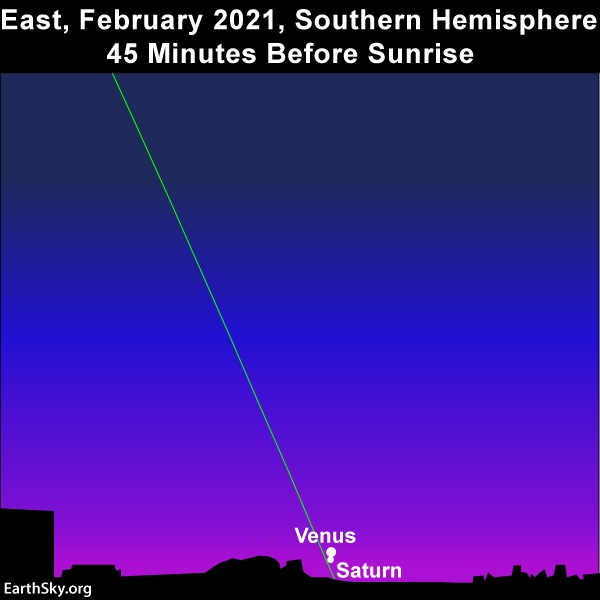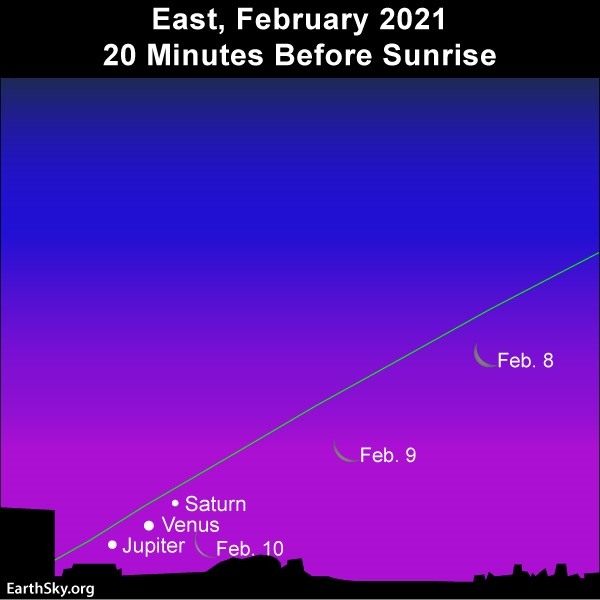Observer’s challenge: Venus-Saturn conjunction February 6, 2021

As January 2021 ends and February begins, Venus, the sky’s brightest planet, is rising just ahead of the sun in bright morning twilight. Though not easily visible from the Northern Hemisphere, and only slightly more visible from the southern part of Earth, it’s the brightest planet in the morning sky in early February. If you can see it, keep watching Venus as this week passes, and you just might catch the furtive meeting of Venus and Saturn at dawn on February 6.
The farther south you live, the better your chances of catching the Venus-Saturn conjunction. That’s despite the fact that Venus ranks as the third-brightest celestial body to light up the sky, after the sun and moon. If you need them, use your binoculars to scan for Venus along the eastern horizon as dawn is breaking. We give you the approximate rising time for Venus at various latitudes for early February 2021 (assuming an absolutely level horizon):
40 degrees north latitude: Venus rises about 1/2 hour(30 minutes) before the sun
Equator (0 degrees latitude): Venus rises about 5/6 hour (50 minutes) before the sun
35 degrees south latitude: Venus rises about 1 hour (60 minutes) before the sun
For more specific info, go to Old Farmer’s Almanac (U.S. and Canada) or TimeandDate (worldwide)
The 2021 lunar calendars are here. Order yours before they’re gone!
Maybe you recall that Saturn was in our evening sky in December. It’s now officially in the morning sky, too, but even harder to see than Venus because it’s fainter. Venus beams some 65 times more brilliantly than Saturn does now. Still, if you aim your binoculars at Venus, you just might see Saturn and Venus taking stage in the same binocular field on the mornings around their February 6 conjunction. At conjunction, Saturn will pass a scant 0.4 degree to the north of Venus. For reference, the moon’s diameter spans 0.5 degree of sky.

Given an unobstructed horizon, on or near February 6, the planetary twosome will rise at approximately:
40 degrees north latitude: 1/2 hour (30 minutes) before sunrise
Equator (0 degrees latitude): 3/4 hour (45 minutes) before sunrise
35 degrees south latitude: 1 hour (60 minutes) before sunrise

Bottom line: Saturn will have a conjunction with Venus on February 6, 2021. Use binoculars to scan in the east shortly before sunrise. Jupiter is returning to the morning sky, too, but, as Jupiter and Saturn ascend into the sky before sunup, Venus is descending into the sun’s glare. Jupiter’s conjunction with Venus will come on February 11, 2021.











